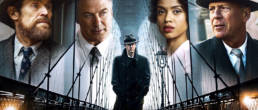
During these trying times, I’ve learned to make the most of what the lockdown has had to offer. Catching up with my movie watchlist has been my favourite activity so far. It brought me to Edward Norton’s ‘Motherless Brooklyn’ (2019), the actor’s second directorial foray and the first which he has written, directed, and starred in. It’s been nineteen years since ‘Keep the Faith’ (2000), the romantic dramedy in which he shared the screen with Jenna Elfman and Ben Stiller, and one can easily tell how much Mr Norton has grown as a filmmaker.
‘Motherless Brooklyn’ received a mixed bag (albeit predominantly positive) attention from critics and the awards circuit, including a nod from the Golden Globes for its emotionally exquisite soundtrack penned by Daniel Pemberton, better known for ‘The Man from U.N.C.L.E.’ (2015) and ‘Steve Jobs’ (2015). Edward Norton received a Satellite Award as a film auteur, as did Beth Mickle and Michael Ahern for their production design and art direction. Dick Pope, of ‘The Illusionist’ (2006) and ‘Secrets & Lies’ (1996) fame was also nominated for his stellar cinematography at Camerimage in Poland.
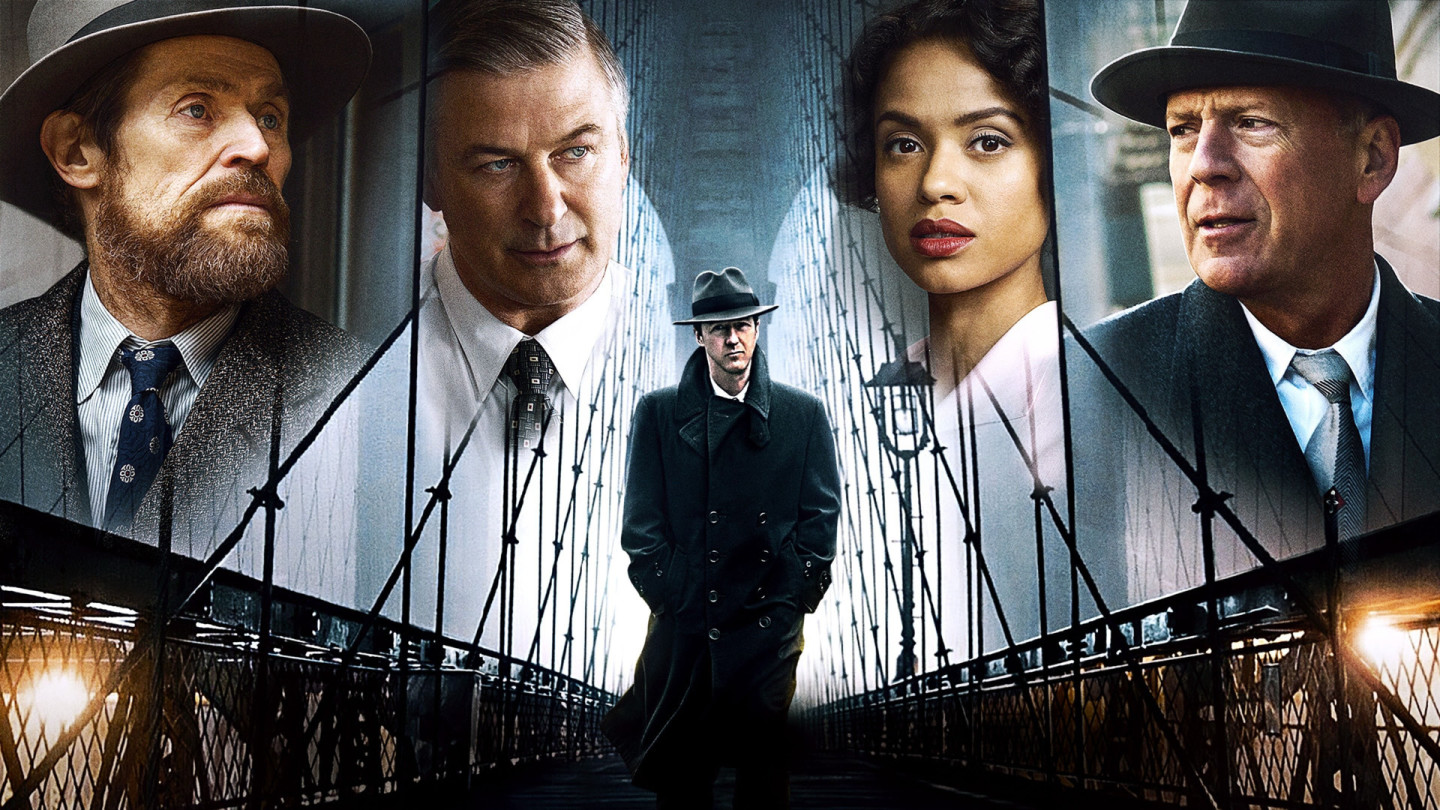 ©WARNER BROS. PICTURES
©WARNER BROS. PICTURES
Based on the eponymous book by Jonathan Lethem, published in 1999, and while retaining the overall style and story elements, ‘Motherless Brooklyn’ takes place in 1950s New York, as it borrows heavily from the Neo-Noir of Hollywood cinema. In his quest to deliver a memorable film, Norton ultimately throws out the book and offers a different flavour, a period oeuvre that reminds us of those immensely addictive dime detective tales while still doused in a powerful political fragrance.
The move to ‘50s New York was made in part to satisfy Norton’s years-old fascination with Robert Moses, the controversial and dangerously powerful city planner. The film was meant to capture ‘the dark, the shadow narrative of how modern New York really got built—the racism that was sort of baked into the city’, the actor-director once said in an interview. Moses Randolph, Alec Baldwin’s villainous character, is based on the city planner. This creative operation further helped define Norton’s Lionel Essrog, the Tourette-affected private eye, as ‘a really terrific vehicle for going deep into the murk of what happened in New York in that time’.
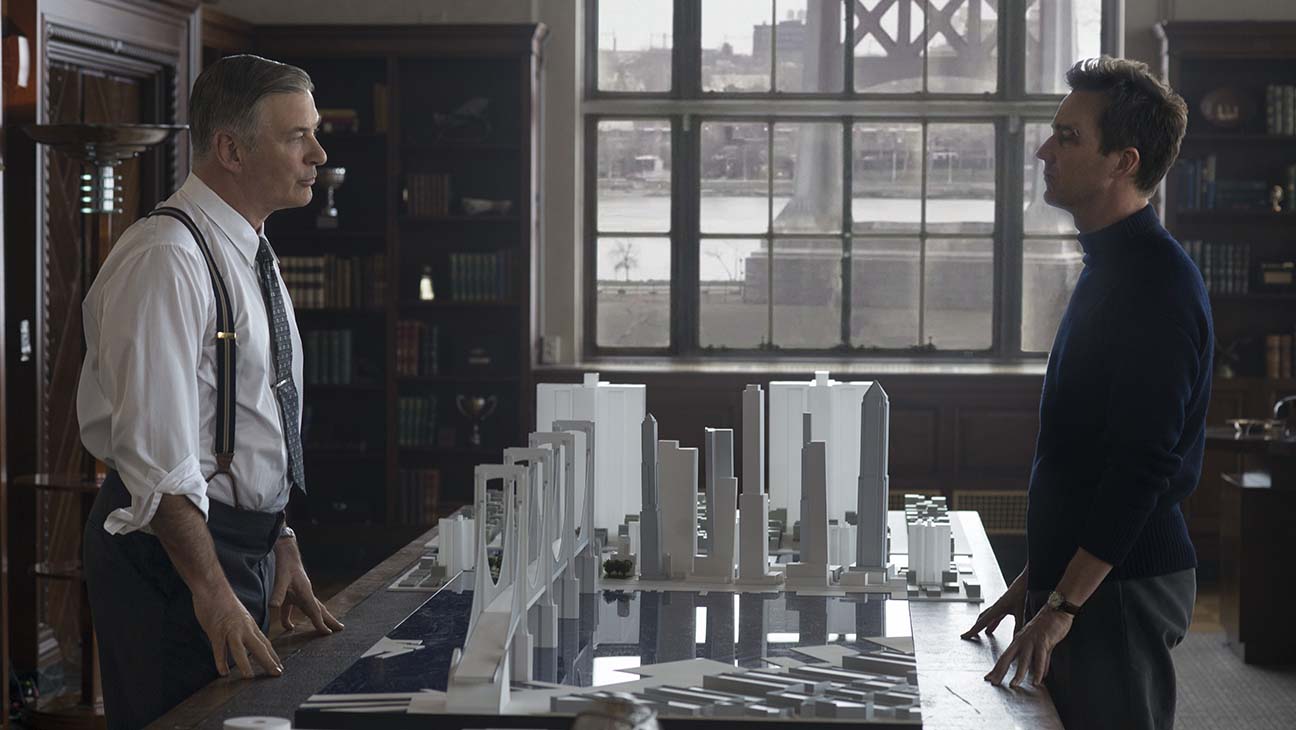 ©WARNER BROS. PICTURES
©WARNER BROS. PICTURES
Lionel refers to himself as ‘spastic’, a term more frequently heard during the ‘50s. Despite his twitchy and complicated condition, he does everything in his power to find out who killed his friend and mentor, Bruce Willis’s Frank Minna, and to protect Gugu Mbatha-Raw’s delightful Laura Rose. Norton’s performance is beyond exceptional, thoughtful, and respectful of a man suffering from Tourette’s. It is also deeply moving, particularly during the bebop jazz scene—the Trumpet Man, portrayed by Michael Kenneth Williams (you might remember him as Omar Little in ‘The Wire’), delivers a series of random beats and abrupt changes in melody that reach a surprisingly tight unison with Lionel’s own fractured yet wonderfully beautiful mind.
If there is one thing that Mr Norton isn’t in short supply of, it’s talent. His performance works on an even more profound level when coupled with Willem Dafoe’s hallucinating rendition of the neurotic Paul Randolph, architect and humiliated brother of Moses.
Helping Lionel along the way—or, in one case, encumbering him in his efforts to bring Frank’s killer to justice, are the ‘Minna boys’, orphans and colleagues of the deceased detective whom he helped and protected and nurtured over the years. Among them, Bobby Cannavale’s Tony Vermonte stands out.
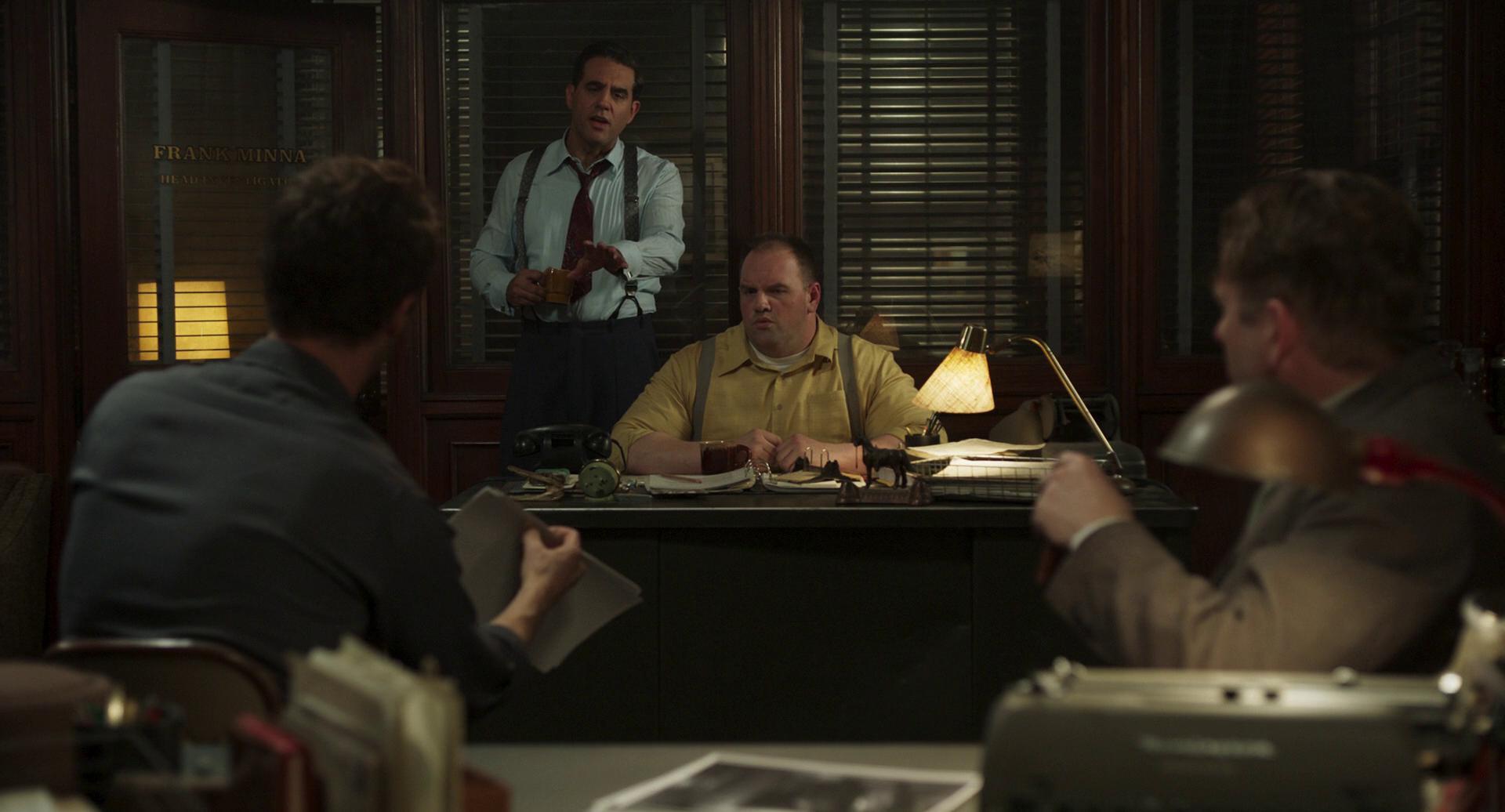 ©WARNER BROS. PICTURES
©WARNER BROS. PICTURES
Story-wise and specifically from a narrative point of view, the characters’ path will seem predictable at times. Parts of ‘Motherless Brooklyn’ have been done before in other detective movies, written in other Ray Chandler-esque novels. Seen this, done that, sure, and it’s rife with red herrings, of which some are more palatable than others, but, in the end, the film’s central message is powerful—an echo for today’s world. In it, power and ambition continue to shape our society, no matter who dies along the way to make someone’s dreams happen.
Unsurprisingly, the novel faced a similar issue. Salon’s Gary Krist even wrote once that ‘”Motherless Brooklyn” has a few problems—including some cartoon-like stock characters and one scene near the end that flirts with maudlin sentimentality—but it works far better than the average hip postmodern novel in terms of sheer emotional impact. Because Lethem never lets the metaphorical and linguistic possibilities of his narrator’s illness overshadow his immensely appealing humanity, we really care about Lionel and his search for his mentor’s killer’. In many ways, the same can be said about Norton’s film.
There are parts about Tony that might rub a discerning viewer the wrong way, especially in the way he makes his suggestions. Moses’s overall demeanour might carry a bit more flair than usual, and perhaps even Paul’s neuroses may be over the top. In the end, it doesn’t matter, because we are so emotionally invested in Lionel’s quest for truth and justice in the muddied heart of the Big Apple that we cannot be bothered to put the entire movie under a microscope. His resolution is too important. He deserves it more than anyone.
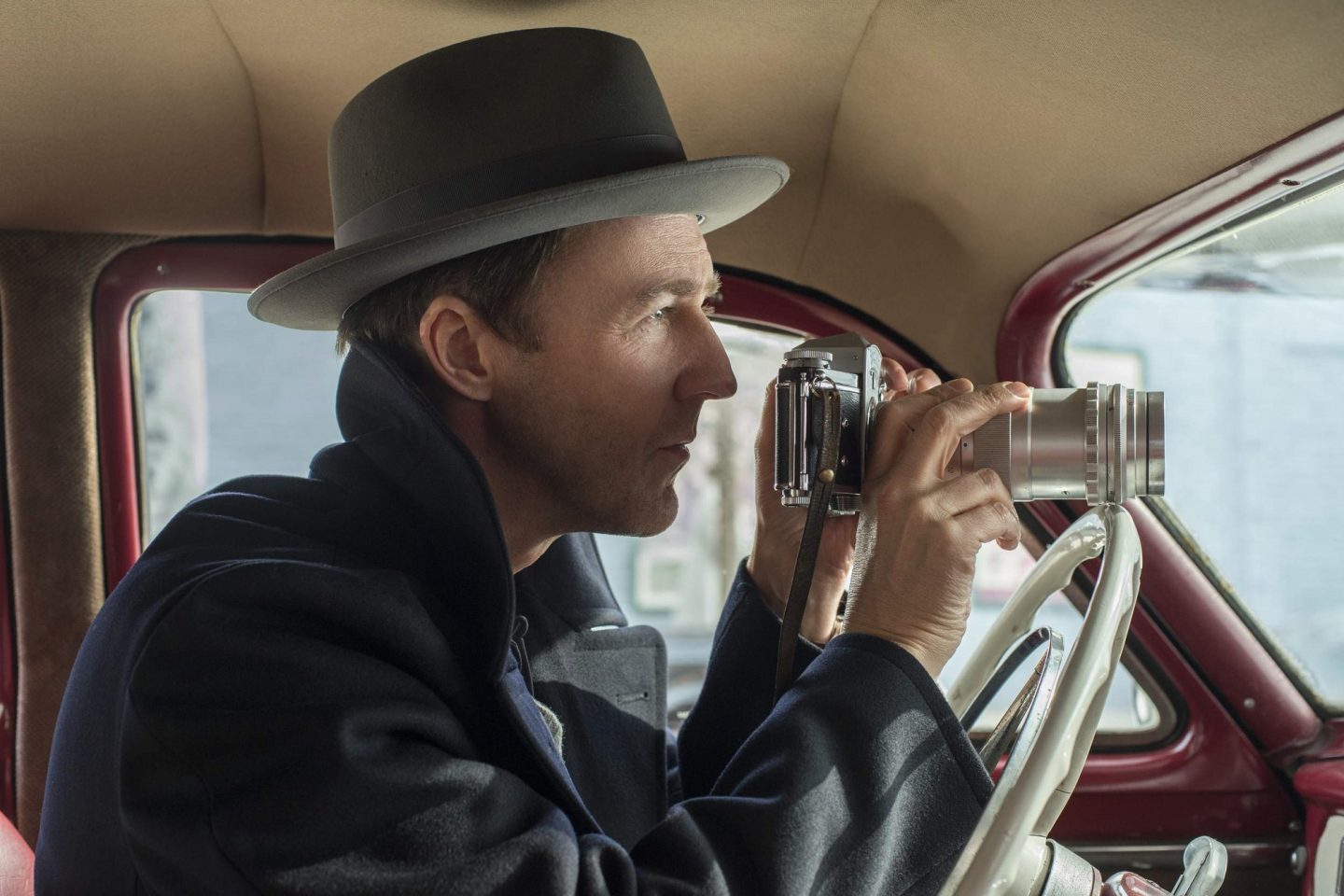 ©WARNER BROS. PICTURES
©WARNER BROS. PICTURES
Dick Pope’s illustrious cinematography brings out the true charm of noir flicks with a modern smoothness that is not easy to attain. There are layers of beauty and sensitivity that require discussion. The two-time Oscar nominee has worked with Norton before on ‘The Illusionist’, therefore having already established a fluid professional relationship with the actor-director. In an interview with SHOOT, Mr Pope said that the biggest creative challenge he had to deal with was ‘bringing to the screen and matching the cinematic expectation of the film that Edward had lived with and dreamt about for nearly 20 years’. Fortunately, the cinematographer was given a gorgeous photobook that Norton had compiled to express his singular vision, to begin with.
According to Mr Pope, there was a clearly spoken desire for an artful lushness to be embedded within the image. There, the old cinema patina was required but without suggesting that the image had been in any way treated or altered. ‘Motherless Brooklyn’ is, in many ways, an ode to ‘Chinatown’ (1974), but it also draws inspiration from ‘40s and ‘50s New York photography by Saul Leiter, Vivian Maier and Robert Frank. Norton even came forth with his own collection of photographs to support the cinematographer’s process—among them, stills of the original Penn Railroad Station were a brilliant source of inspiration for how the movie’s lighting functioned.
As far as the palette and composition are concerned, the desired effect was accomplished. The cinematography of ‘Motherless Brooklyn’ is one of its strongest points, capturing our focus with its powerful shades of yellow and red, its abundance of shadows and darkness, its plays of reflections and negative spaces, and the way in which Lionel’s loneliness and isolation are significantly amplified through camera movement.
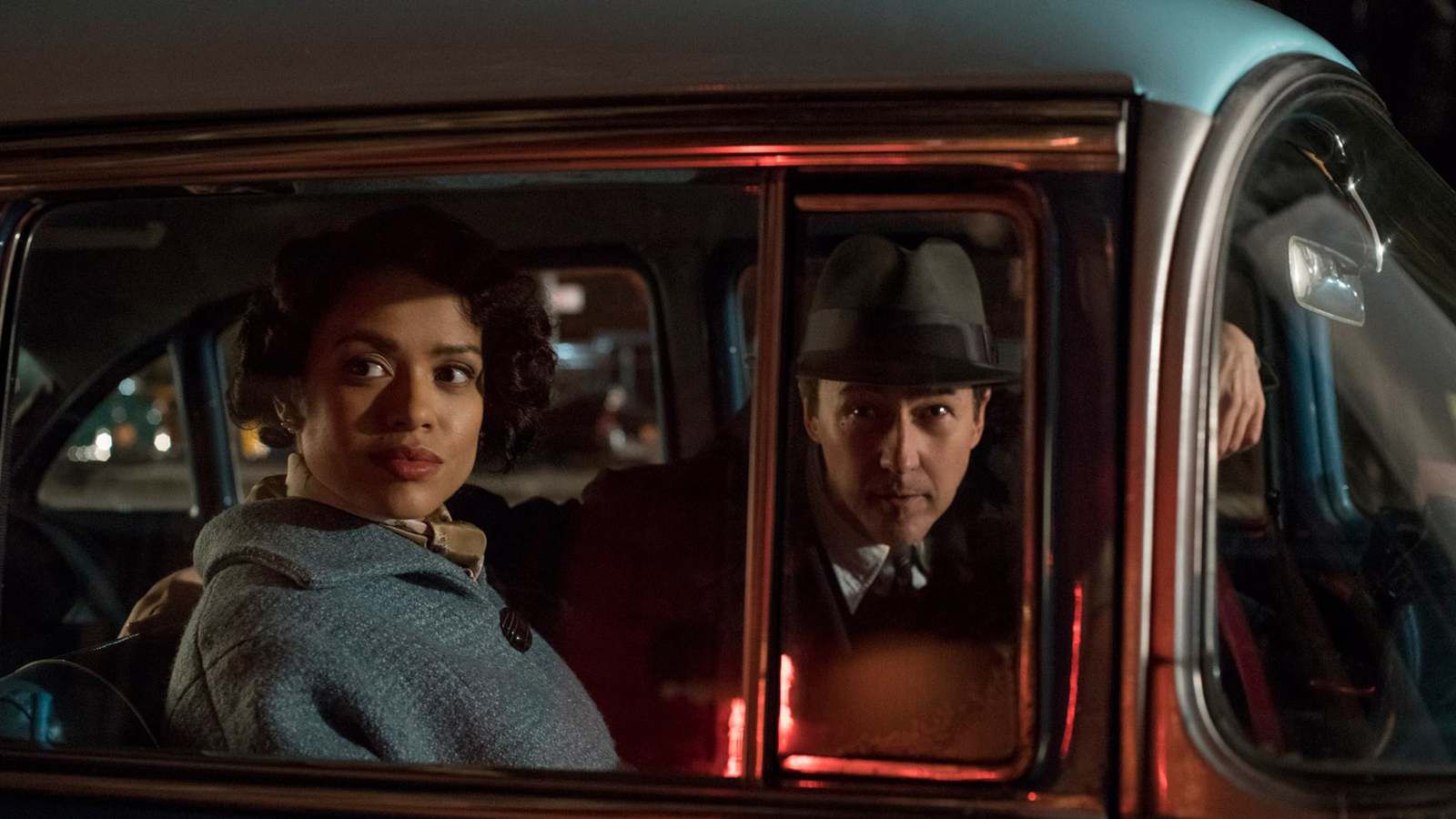 ©WARNER BROS. PICTURES
©WARNER BROS. PICTURES
The look and feel of ‘Motherless Brooklyn’ were accomplished with production designer Beth Mickle’s unwavering support and a plethora of inspiration from Robert Caro’s ‘The Power Broker’, a popular biography of Robert Moses. Ms Mickle had her work cut out for her, of course, considering the abundance of period pieces required for the sets.
In one interview, she talked about the initial creative process. Pinterest and Google are key sources of visuals in this day and age, but she still had to do some old-fashioned research along the way. ‘We used to have to go [to] the image library of New York, and we still do a bit of that. But that’s the first step, collecting all the imagery and getting a better sense of the architecture, signage, and graphics. Looking at what kind of vehicles populated the streets. That’s general period research.’
While some of New York’s legendary landmarks remain the same—see the Chrysler Building or the Empire State Building or the Brooklyn Bridge, for example – it is a city that consumes itself and goes through radical changes almost every year. For most New Yorkers, it’s a point of gratification. For Ms Mickle, it’s a point of in-depth analysis. And since Lionel’s journey takes us through the entire city, offering even a breath-taking car chase across Harlem, New York had plenty to offer. The production design and Michael Ahern’s award-winning art direction only took what was already there and brought it back into the ‘50s with minute re-façade techniques.
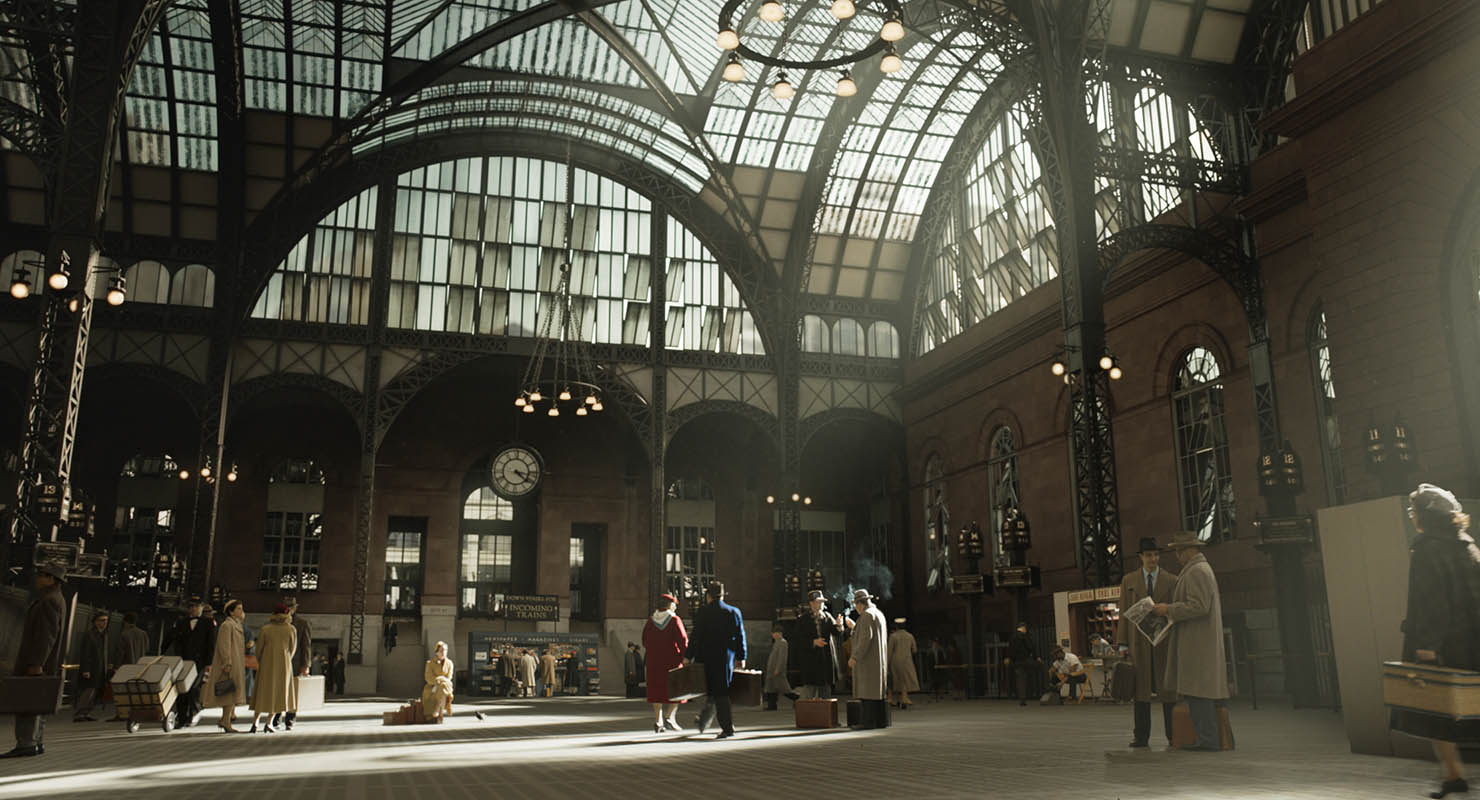 ©WARNER BROS. PICTURES
©WARNER BROS. PICTURES
Gorgeously rich in sharp, fast-paced dialogue and jazz melodies that are typical of the Neo-Noir style on the silver screen, ‘Motherless Brooklyn’ features music by the revered Wynton Marsalis and a group of veteran jazz musicians such as Joe Farnsworth. Since part of the story takes place in a north Harlem jazz club, Norton has concentrated a substantial amount of effort into creating a genuine and realistic atmosphere of that era, which is why one scene even gives us a dizzying performance of ‘Blues Walk’, originally recorded by Clifford Brown and Max Roach and ‘a staple of that hard-bop era’.
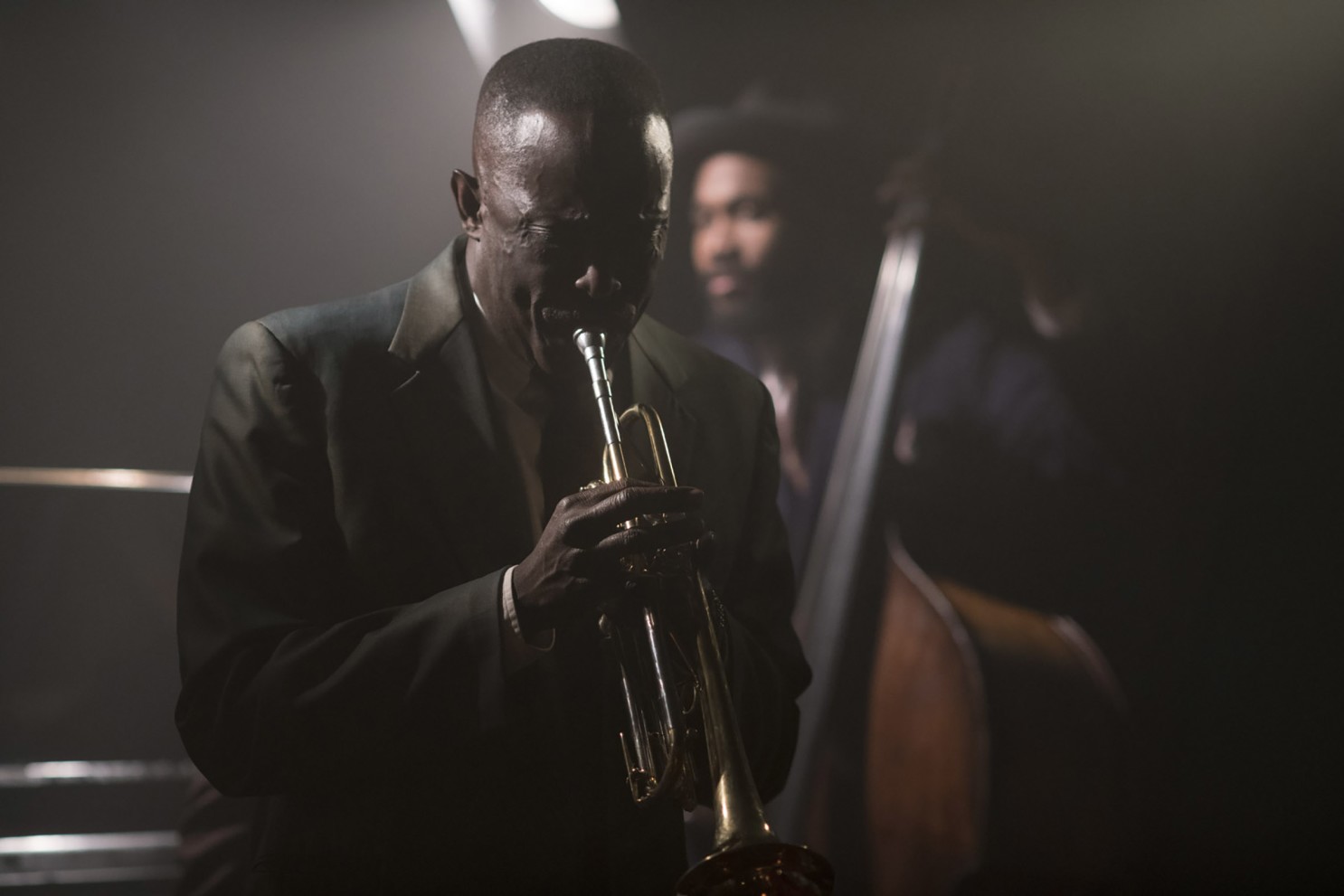 ©WARNER BROS PICTURES
©WARNER BROS PICTURES
The film ultimately and successfully transports the viewers into ‘50s New York. Its depiction of Lionel forces them to root for him, to ride out the twitches and the moments of utter loneliness before the sun rises again and sheds light on the ugly truth that dwells in the foundation of one of the world’s most famous cities.
‘Motherless Brooklyn’ has been a long time in the making, its screenplay finished in 2012 and with seven more years of pitching and tweaking to follow before gaining the support of eminent producers like Gigi Pritzker of ‘Drive’ (2011) and Sue Kroll of ‘A Star Is Born’ (2018). A long time in the making, yes, but certainly worth the effort.
Jules R. Simion
Jules is a writer, screenwriter, and lover of all things cinematic. She has spent most of her adult life crafting stories and watching films, both feature-length and shorts. Jules enjoys peeling away at the layers of each production, from screenplay to post-production, in order to reveal what truly makes the story work.
An Interview with Anna Drubich
Anna Drubich is a Russian-born composer of both concert and film music, and has studied across…
A Conversation with Adam Janota Bzowski
Adam Janota Bzowski is a London-based composer and sound designer who has been working in film and…
Interview: Rebekka Karijord on the Process of Scoring Songs of Earth
Songs of Earth is Margreth Olin’s critically acclaimed nature documentary which is both an intimate…
Don't miss out
Cinematic stories delivered straight to your inbox.
Ridiculously Effective PR & Marketing
Wolkh is a full-service creative agency specialising in PR, Marketing and Branding for Film, TV, Interactive Entertainment and Performing Arts.


